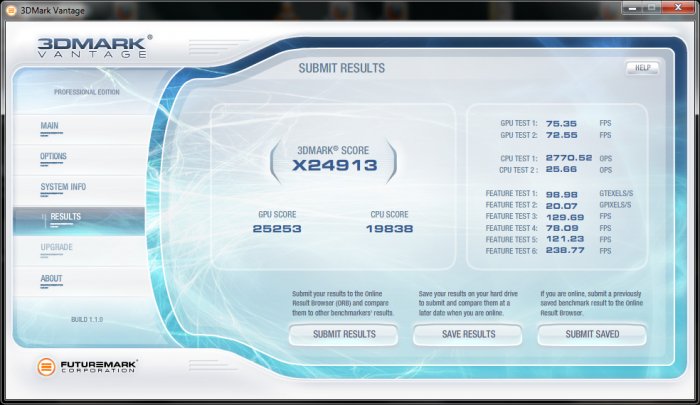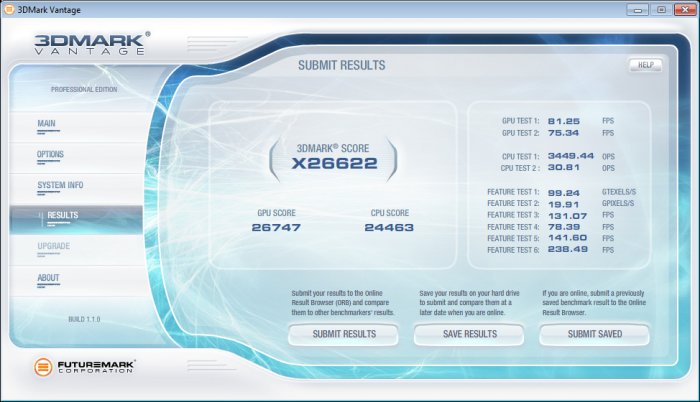The other night, Kayden mentioned that someone asked him if a GTX 590 could be paired up with a GTX 580 (for tri-GPU), and after a bit of laughter, an idea came to mind. While such a configuration isn't possible with NVIDIA, it is possible with AMD.
So, I decided to see how many fuses I could blow and installed a dual-GPU HD 6990 and dual HD 6970s. That's right... quad-GPU.
Ahem, excuse the dust:

Idle:
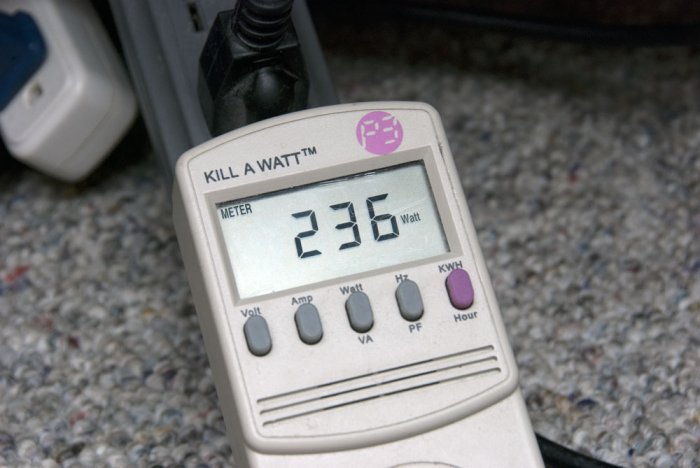
Load:
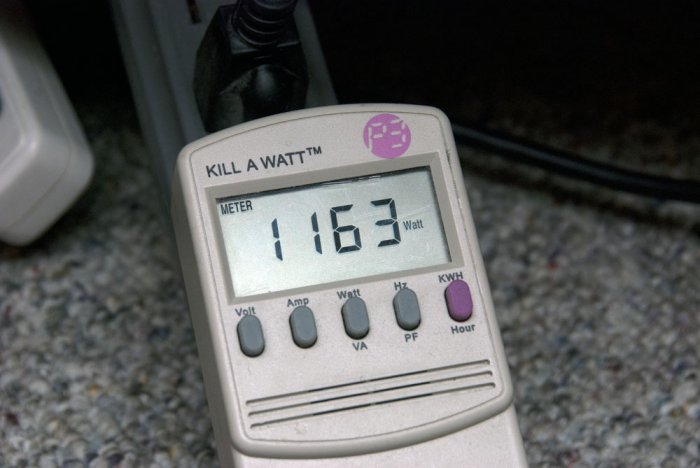
Given that the PSU in use is Corsair's HX1000 (1000W), I think my heart skipped a beat when I first saw this. But, thanks to Jamie and his mathematical excellence, he said that the PSU in fact can peak to 1,200W. With that knowledge in hand, I decided to do a couple of quick tests before disassembling that configuration.
3DMark Vantage Extreme:
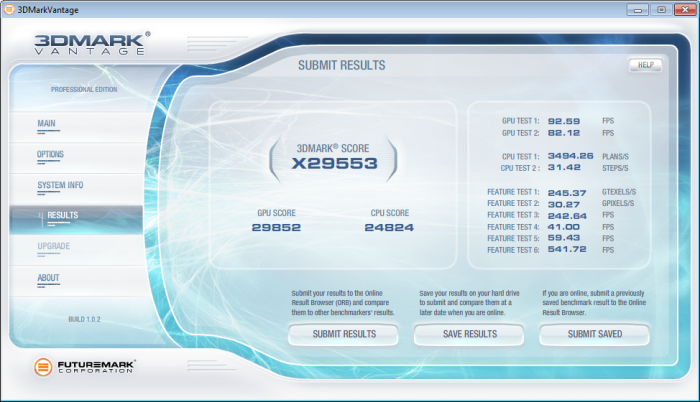
Metro 2033:
2560x1600: DX11, Very High, 0xAA - 45 Minimum / 65.436 Maximum
1920x1080: DX11, Very High, 0xAA - 66 Minimum / 124.659 Maximum
By comparison, a single GTX 580 scores 12750 GPU in 3DMark Vantage and 81 FPS on average in Metro 2033 with Medium detail and DX10 mode. A single GTX 580 retails for about $500, while an HD 6990+6970+6970 setup would be about $1,400.
Now if you'll excuse me, I need some ice.
So, I decided to see how many fuses I could blow and installed a dual-GPU HD 6990 and dual HD 6970s. That's right... quad-GPU.
Ahem, excuse the dust:

Idle:

Load:

Given that the PSU in use is Corsair's HX1000 (1000W), I think my heart skipped a beat when I first saw this. But, thanks to Jamie and his mathematical excellence, he said that the PSU in fact can peak to 1,200W. With that knowledge in hand, I decided to do a couple of quick tests before disassembling that configuration.
3DMark Vantage Extreme:

Metro 2033:
2560x1600: DX11, Very High, 0xAA - 45 Minimum / 65.436 Maximum
1920x1080: DX11, Very High, 0xAA - 66 Minimum / 124.659 Maximum
By comparison, a single GTX 580 scores 12750 GPU in 3DMark Vantage and 81 FPS on average in Metro 2033 with Medium detail and DX10 mode. A single GTX 580 retails for about $500, while an HD 6990+6970+6970 setup would be about $1,400.
Now if you'll excuse me, I need some ice.


